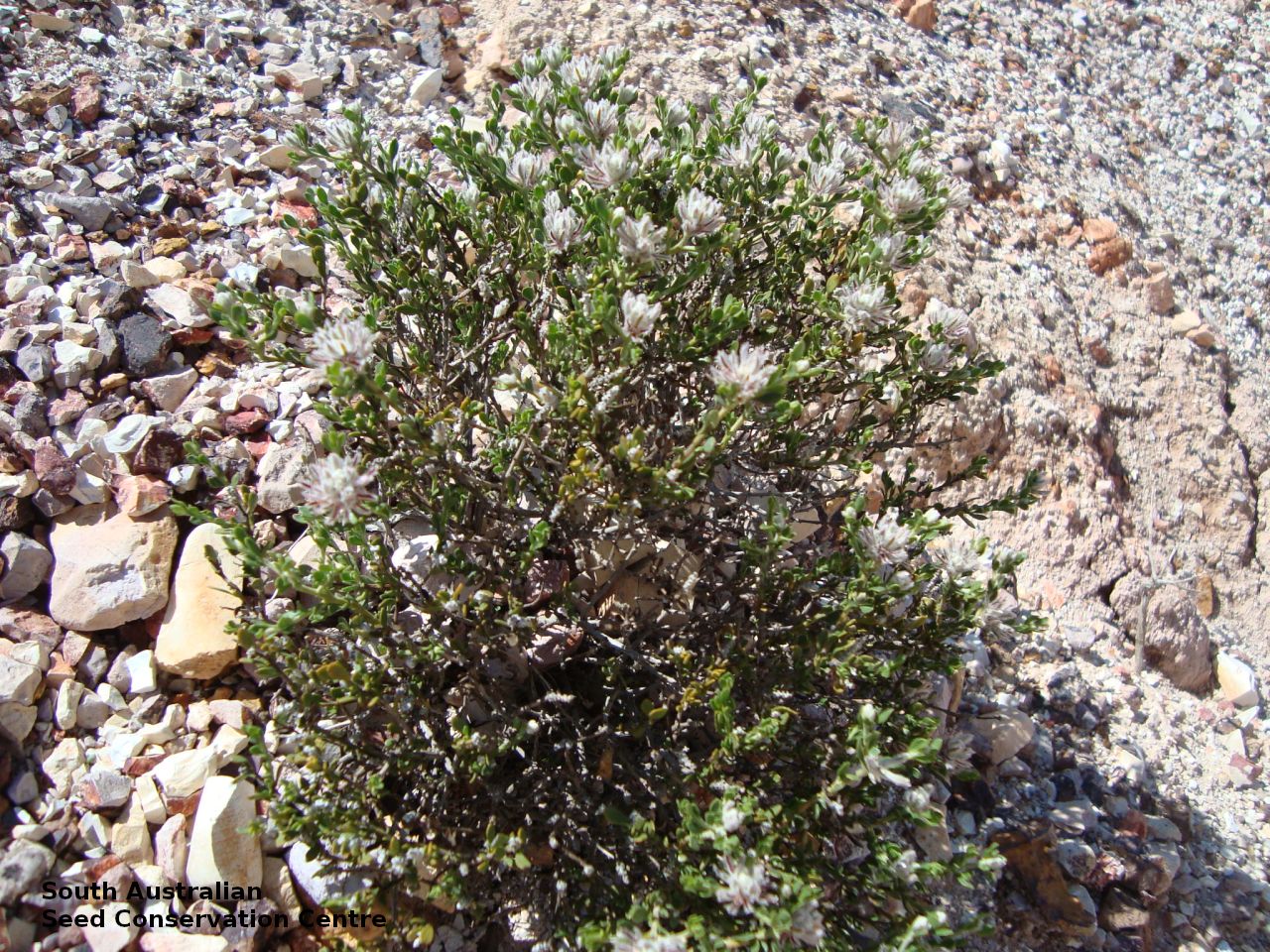
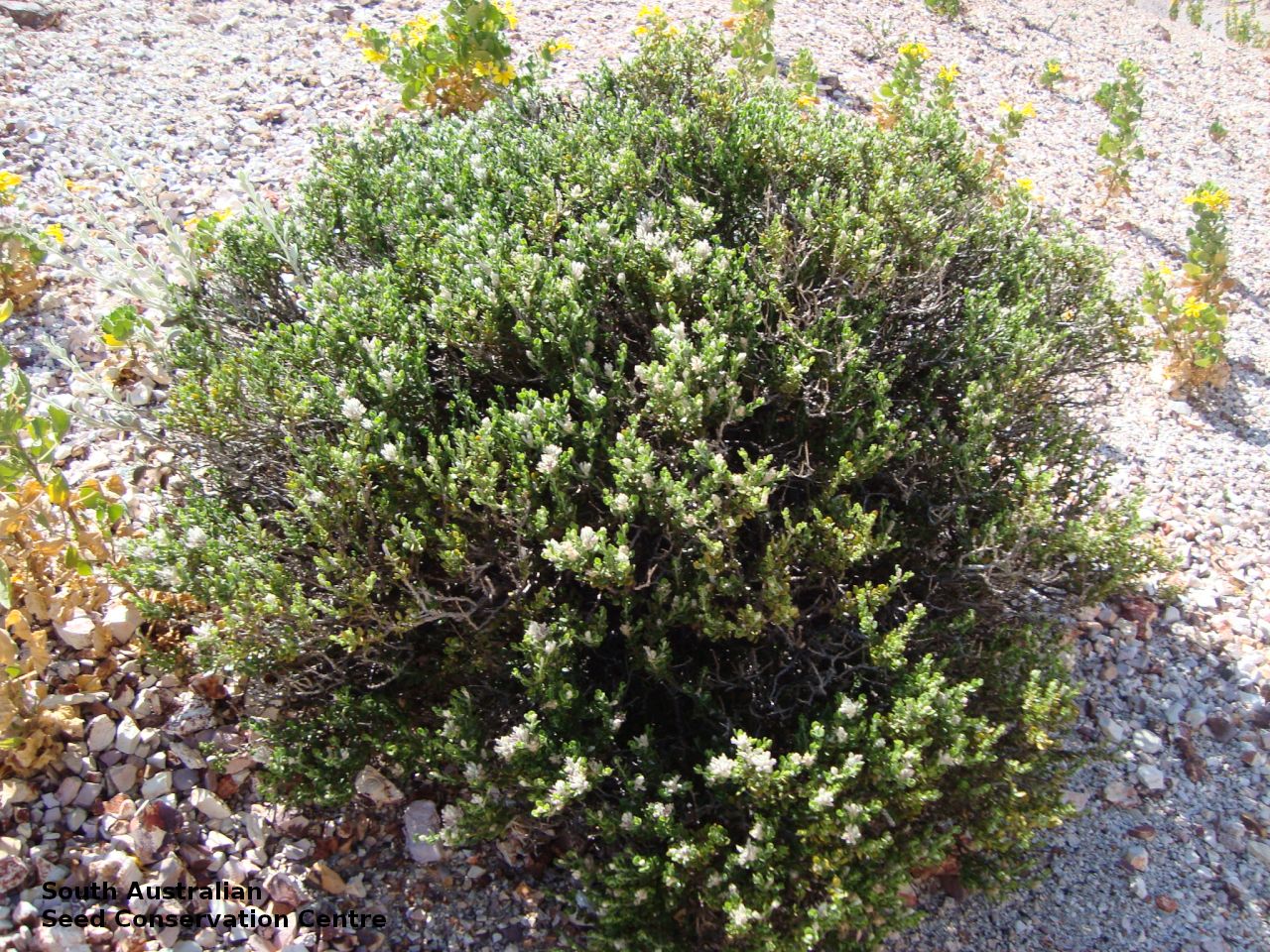
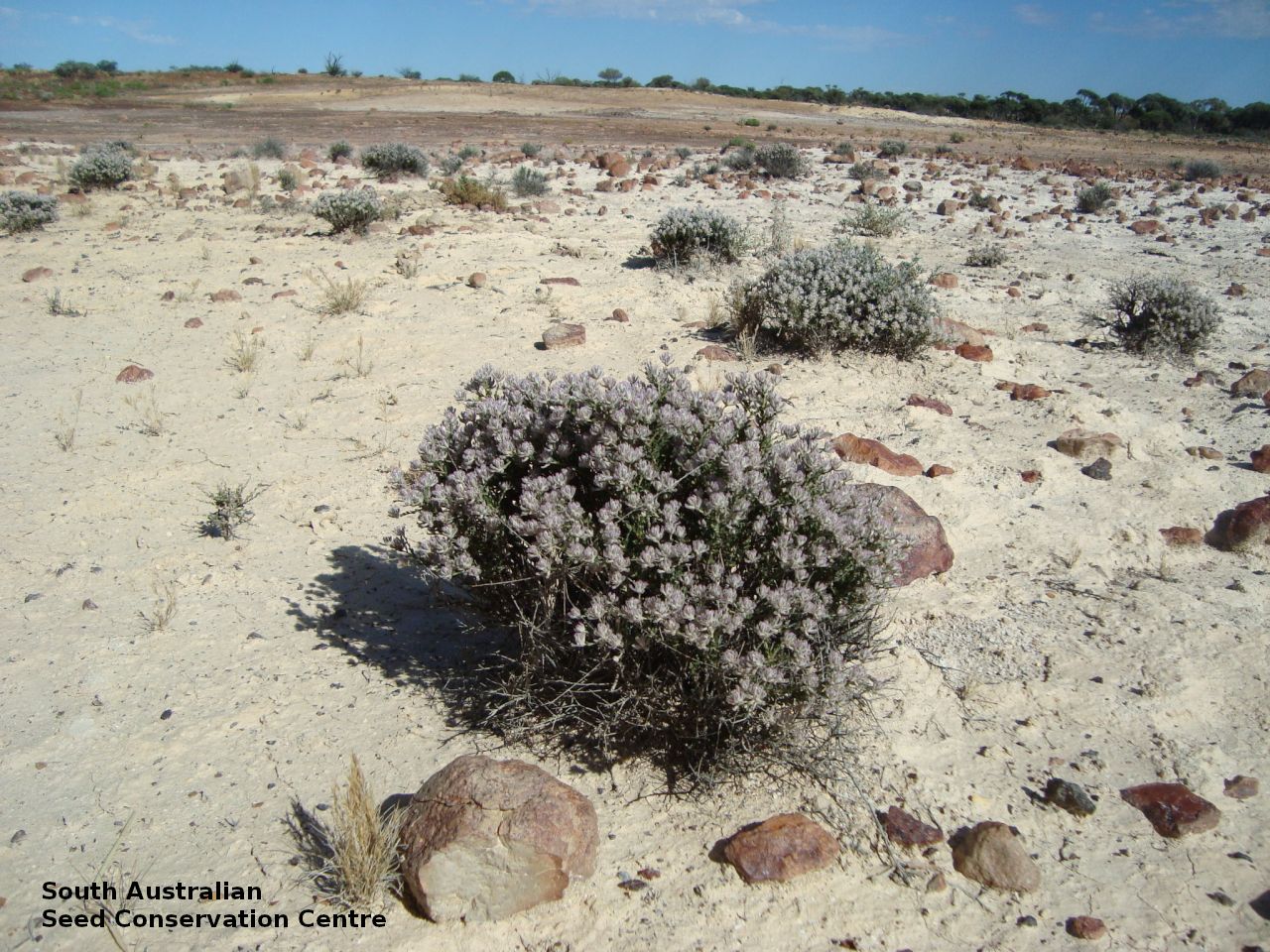
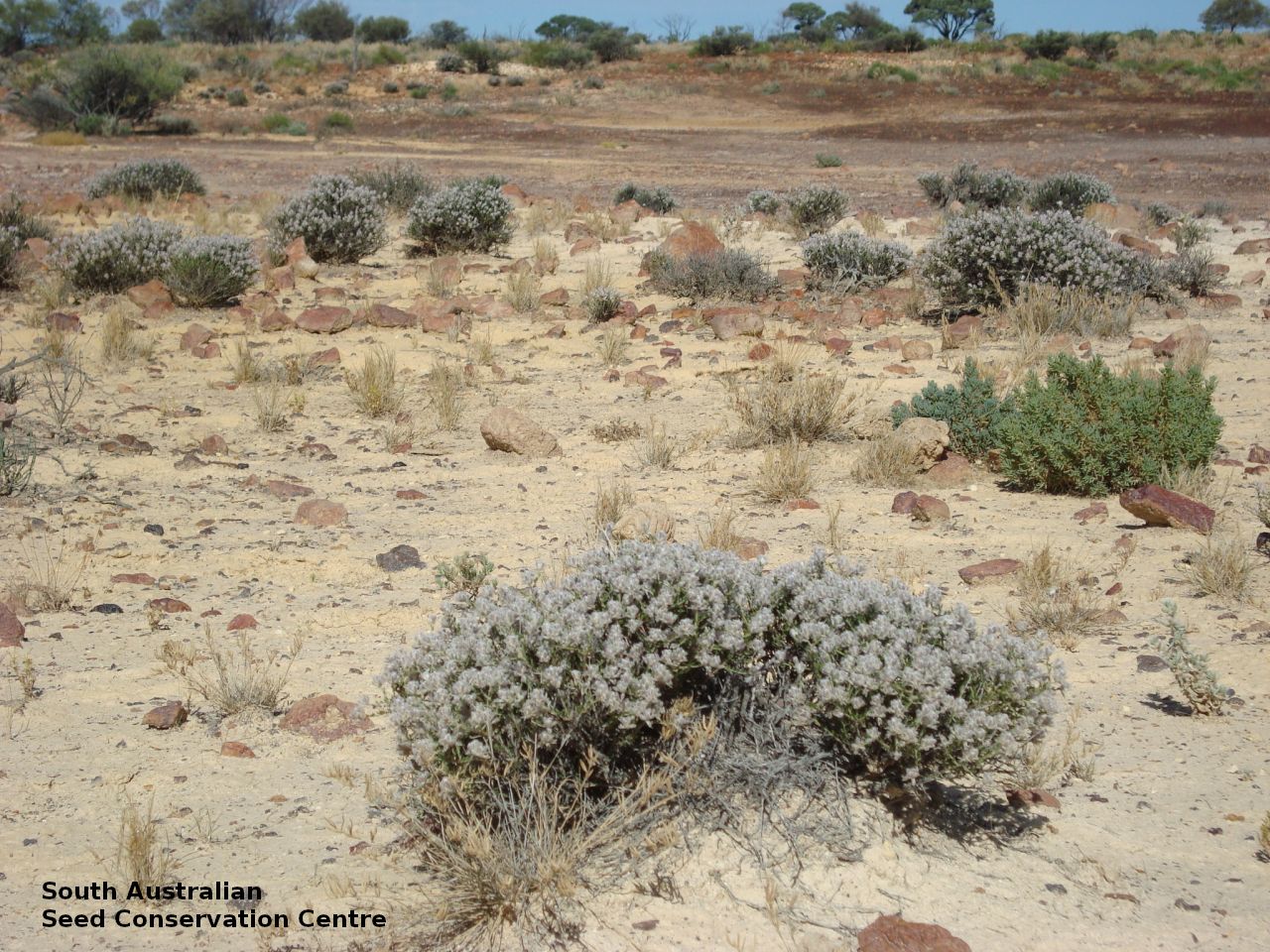
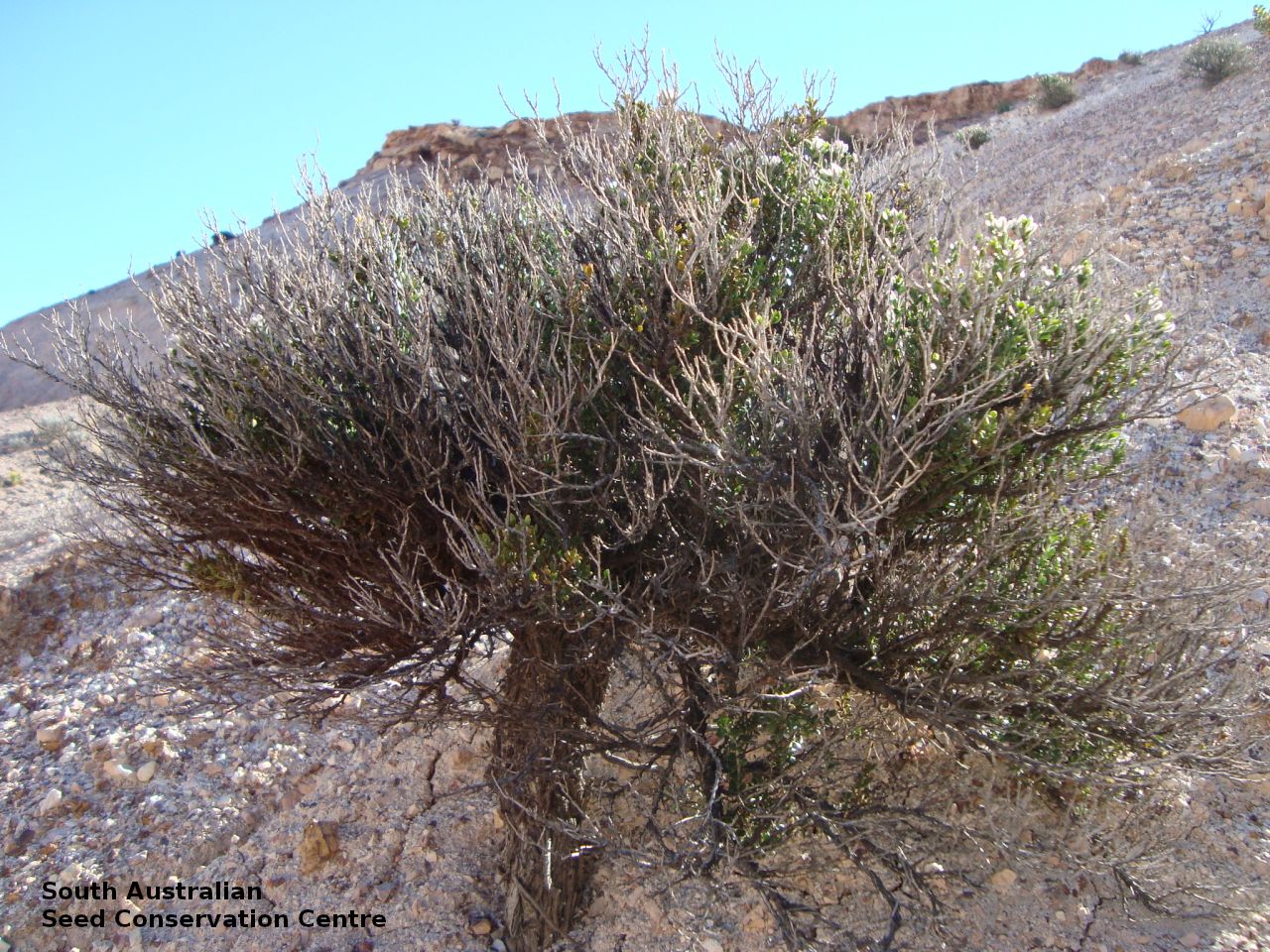
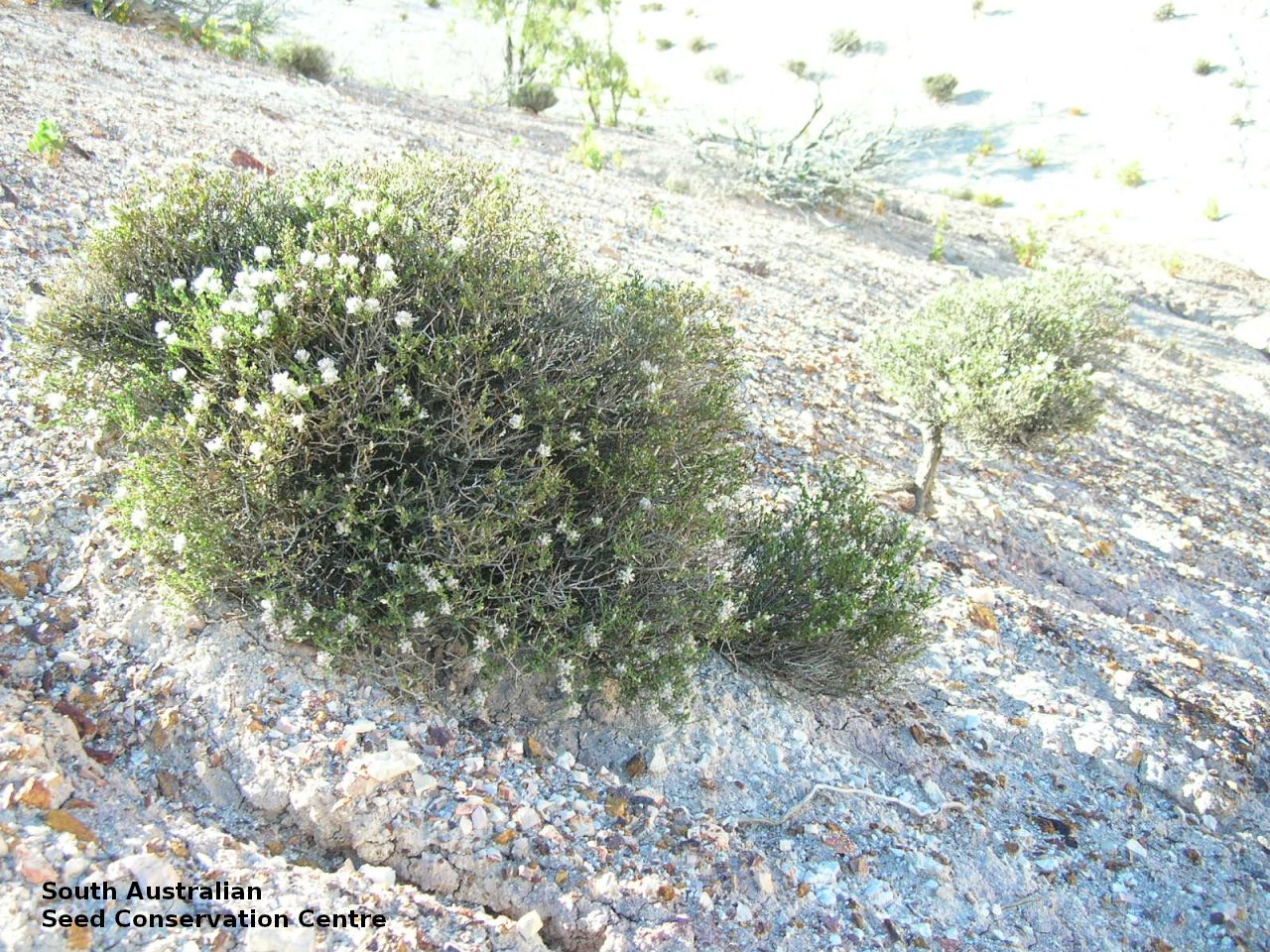
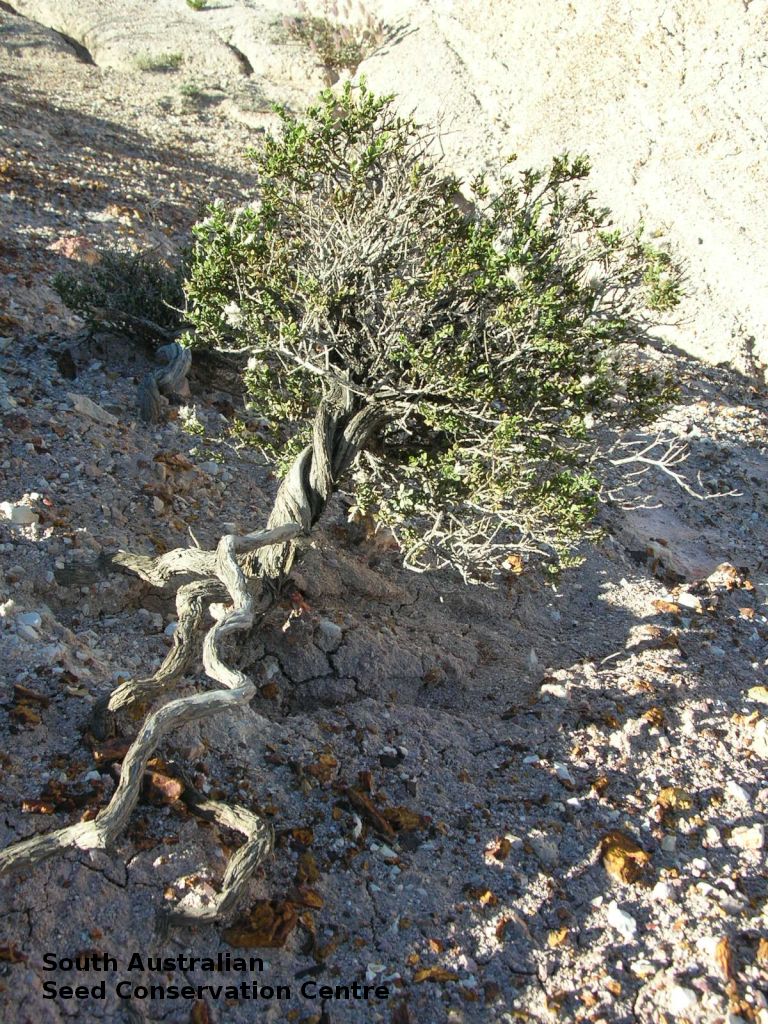
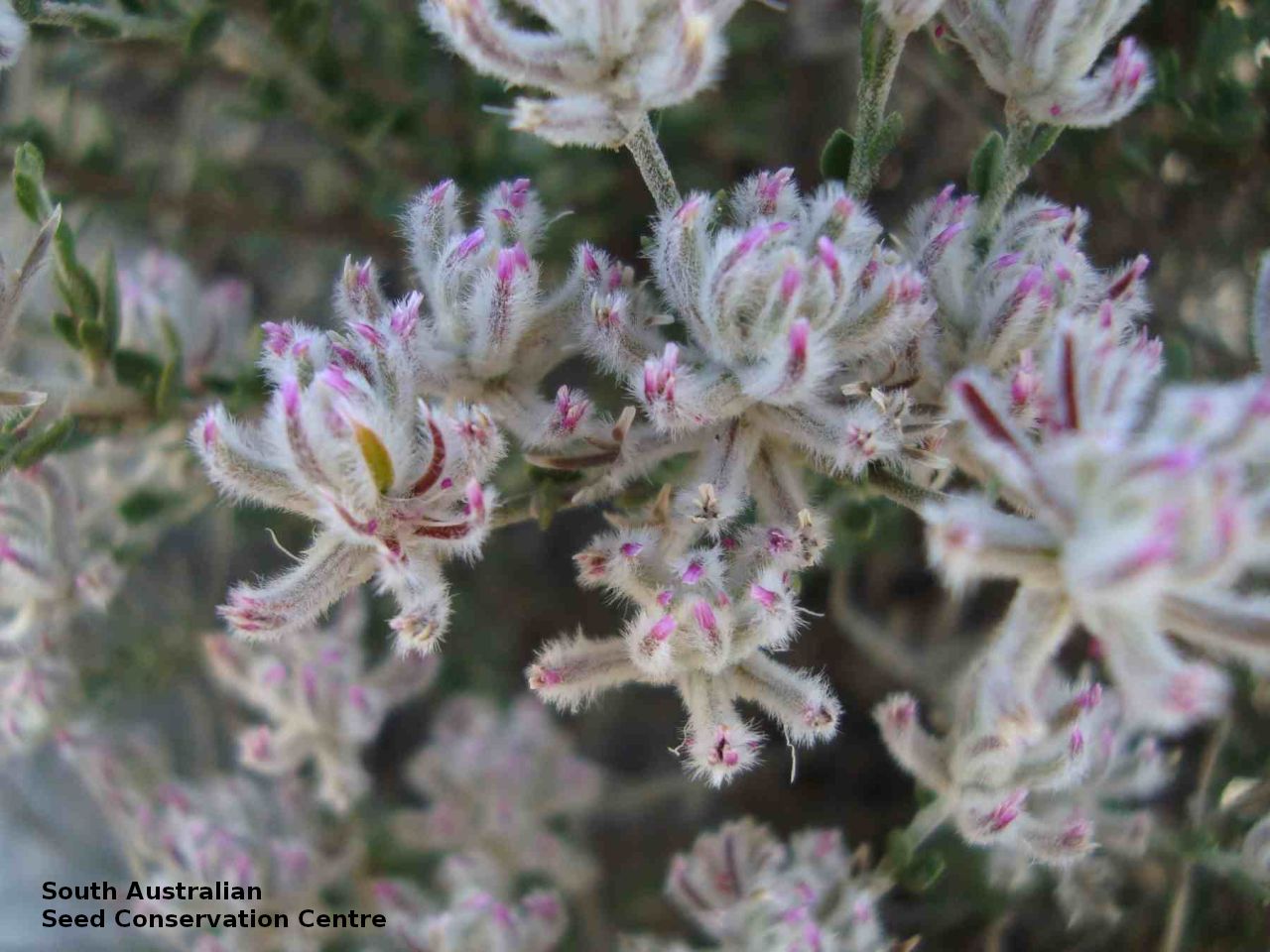
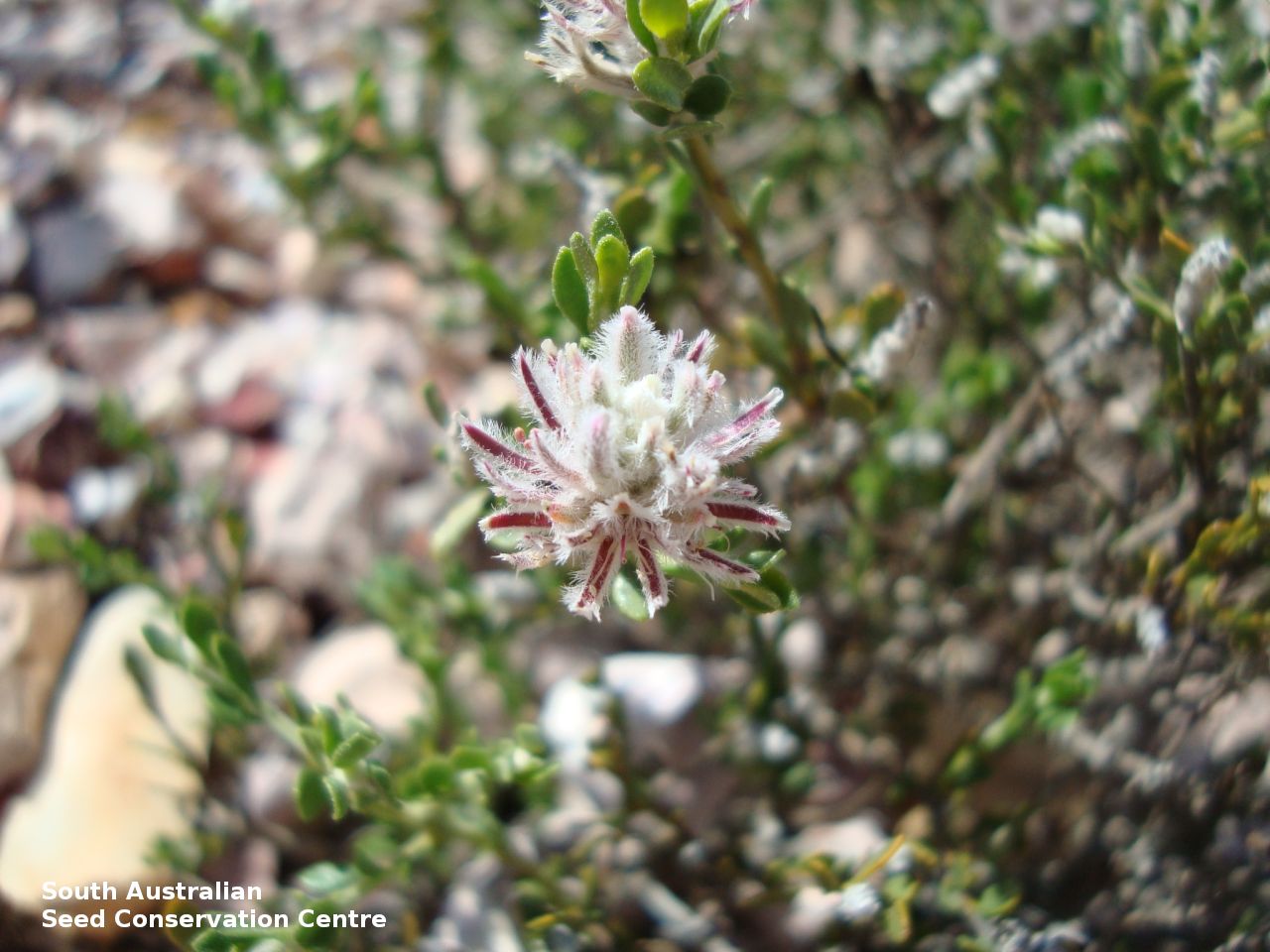
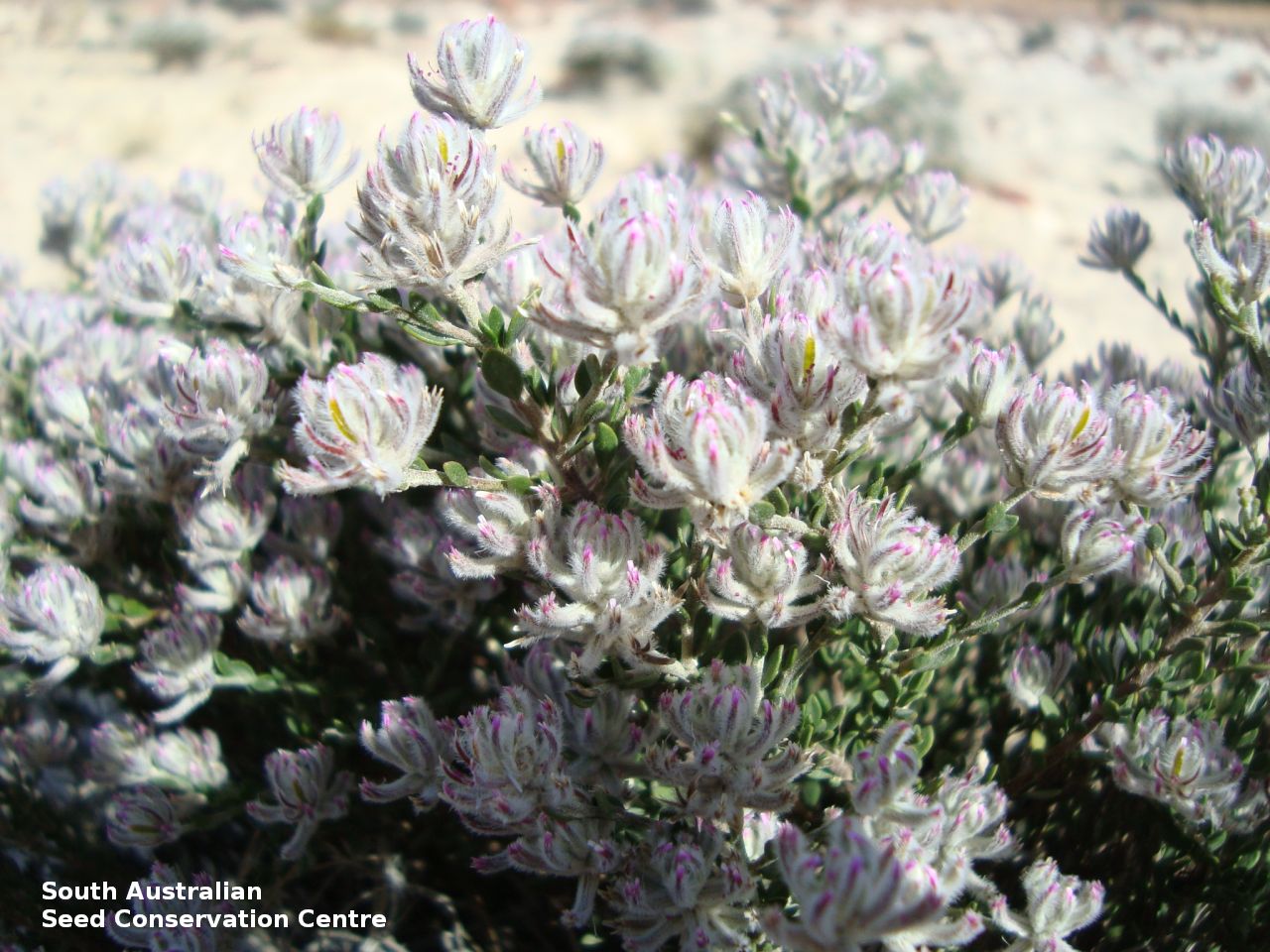
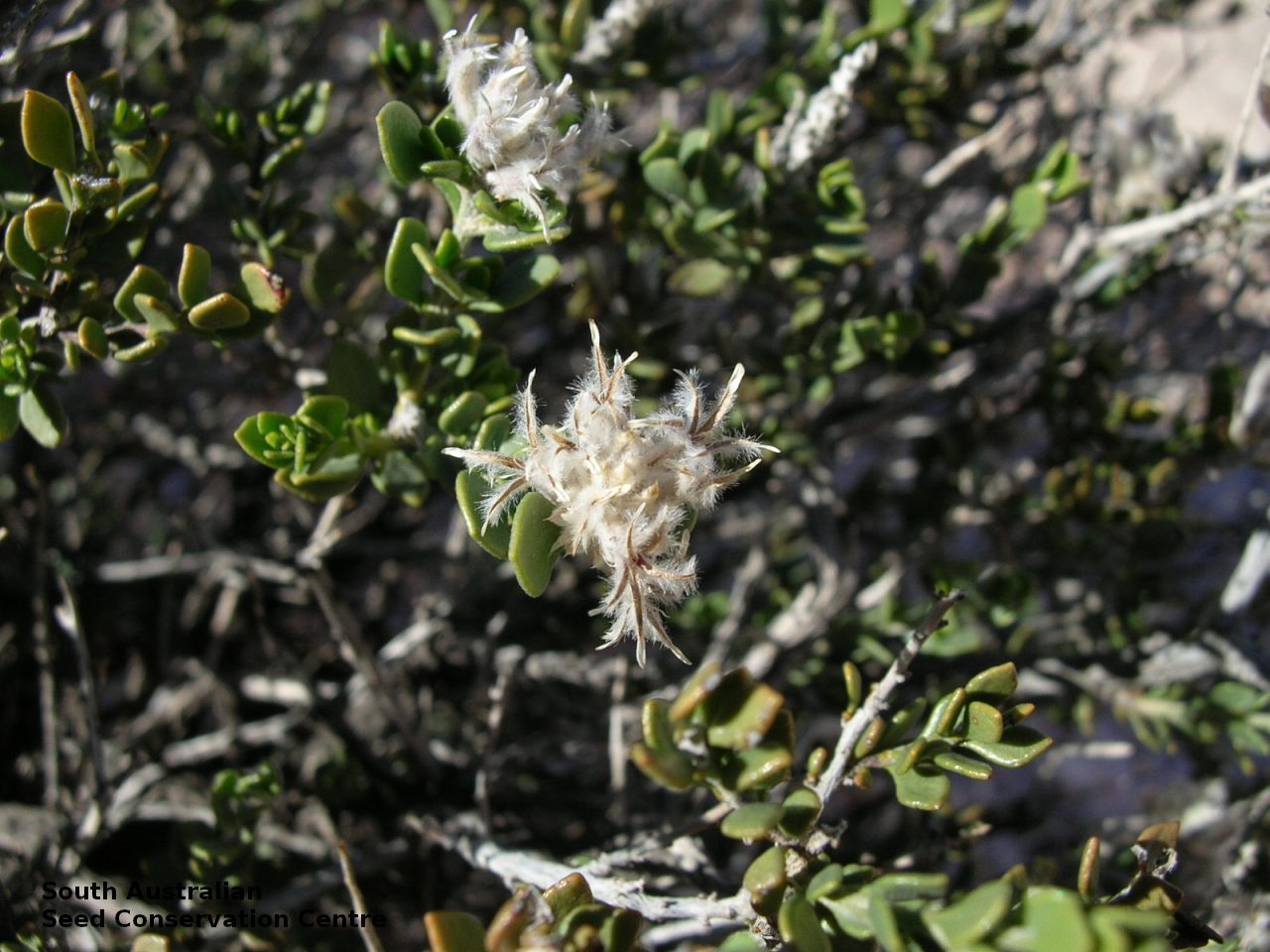
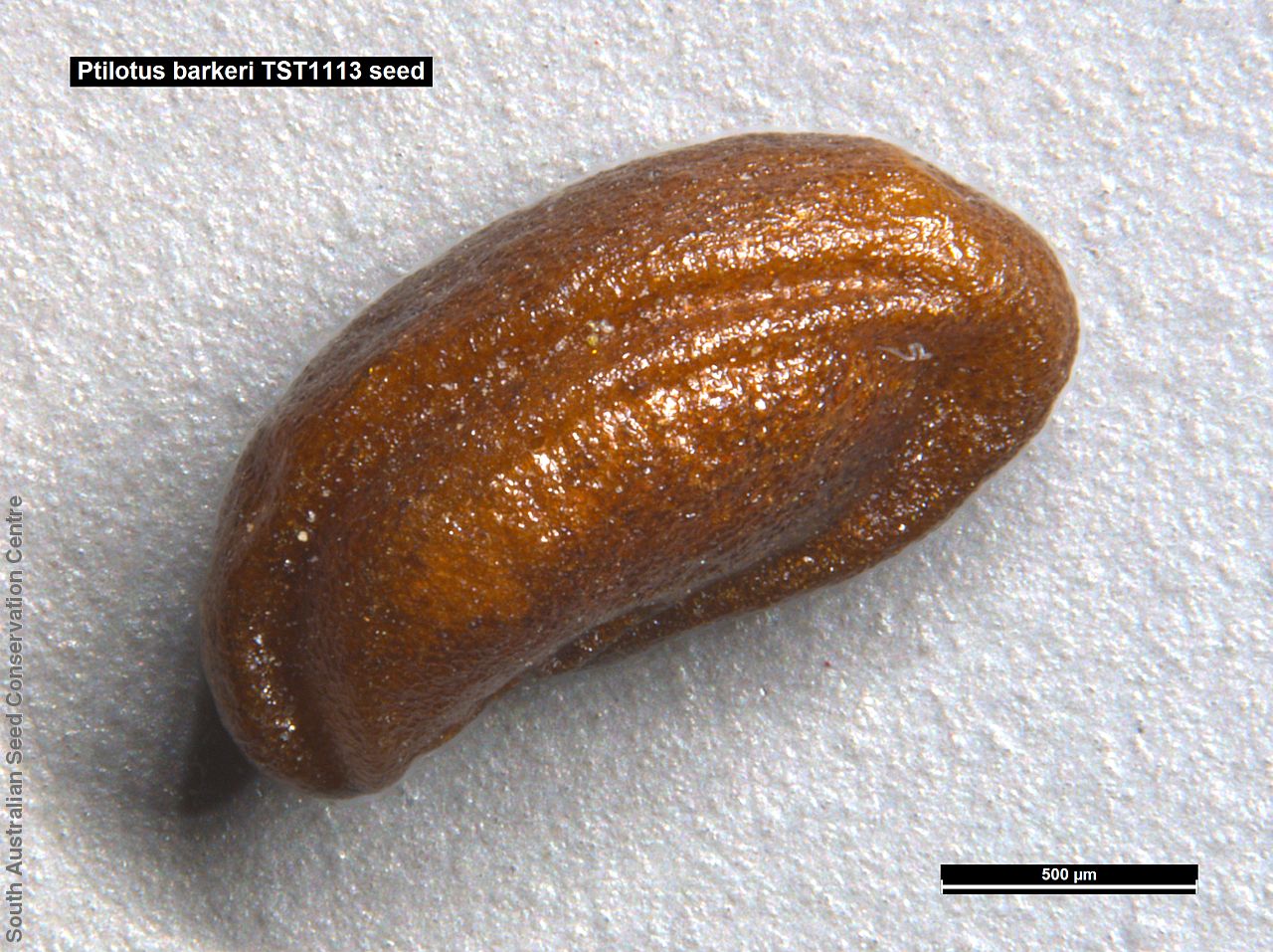
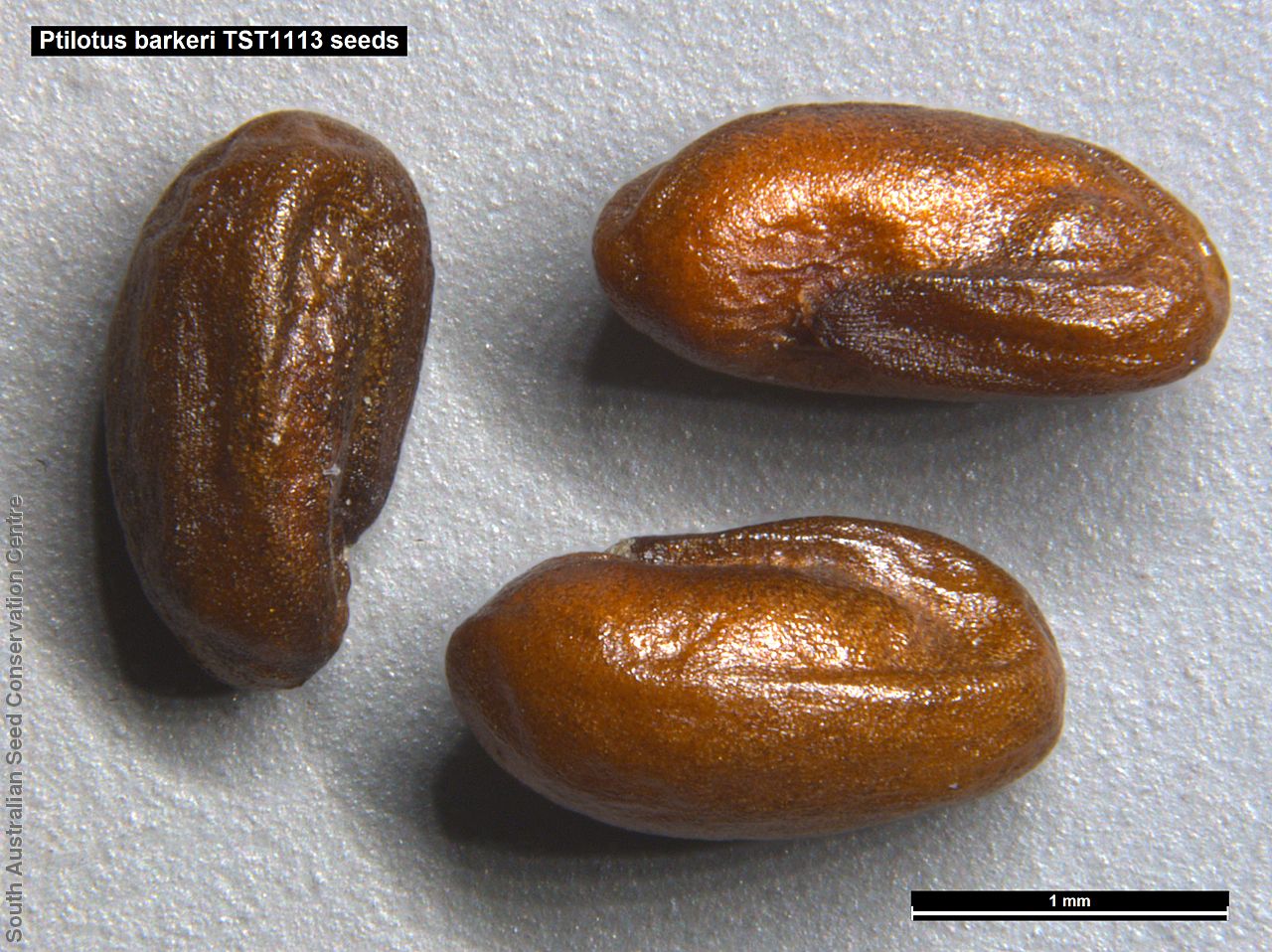
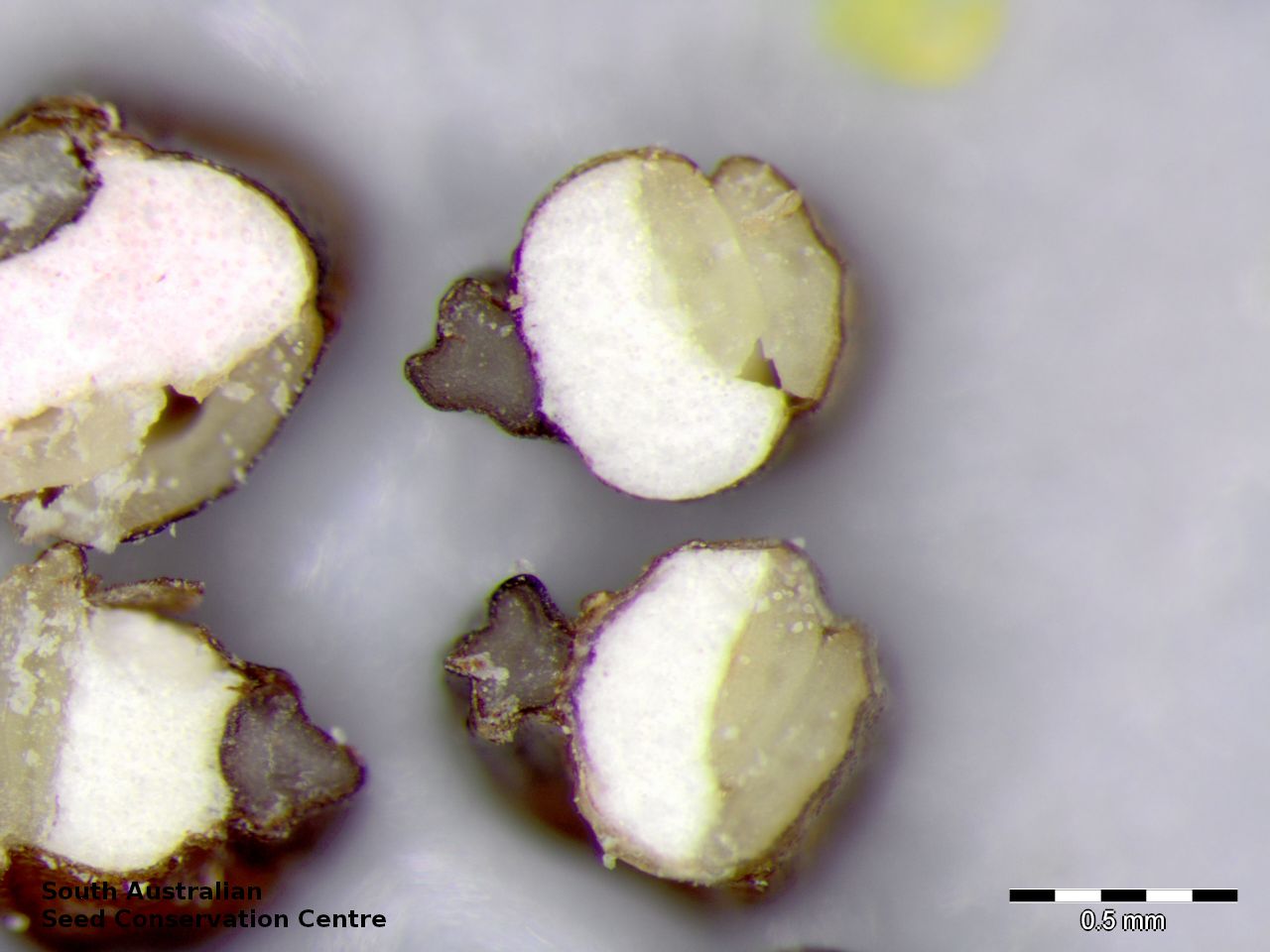

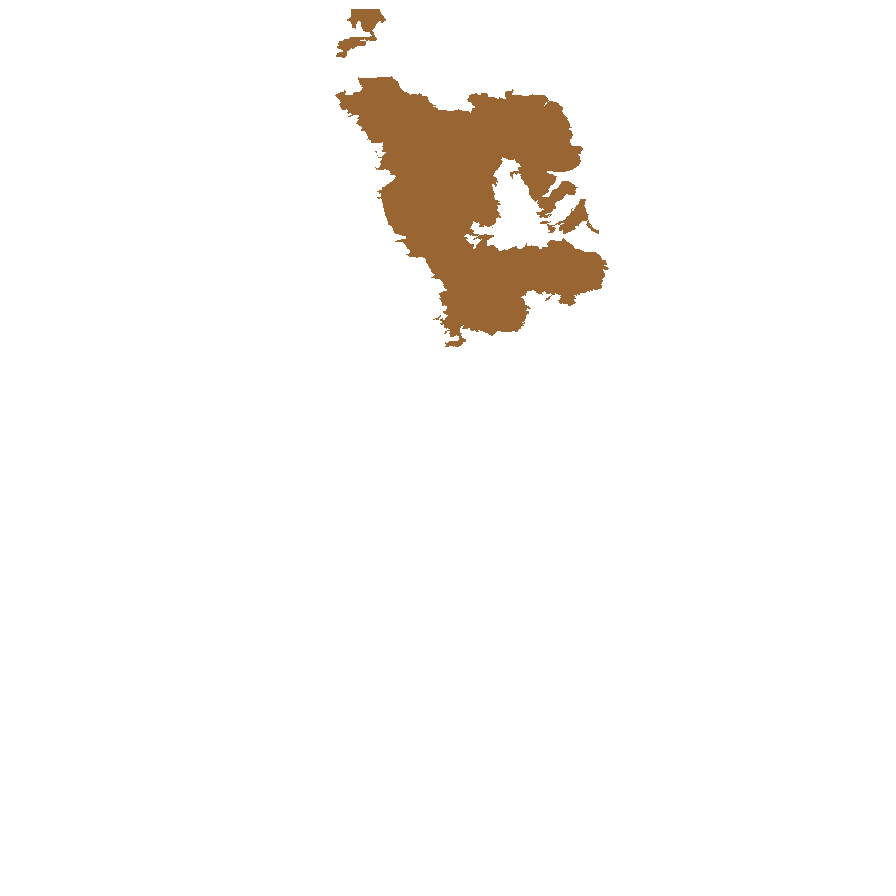
Botanical art
Common names
Barker's Mulla Mulla
Etymology
Ptilotus from the Greek 'ptilotos' meaning feathered or winged; referring to the hairy flowers. Barkeri named after Dr W.R. Barker, Senior Botanist in the State Herbarium of South Australia. Dr Barker had recognised the plant as different from Ptilotus parvifolius and from any other previously described species.
Distribution and status
Endemic to South Australia and found in the north central part, growing in white gypsum or limestone soils on slopes of breakaways with scattered Acacia spp., chenopods. and herbs. Native. Rare in South Australia.
Herbarium regions: Lake Eyre, Gairdner-Torrens
AVH map: SA distribution map (external link)
Plant description
Erect woody shrubs to 40 cm high with stems hairy, glabrescent with age. Leaves ovate or obovate, glabrous, or with some scattered hairs basally or marginally, to 10 mm long and 4 mm wide. Inflorescences terminal or pseudo-terminal, hemispherical or ovoid, to 3 cm long with 35 white, pinkish tinged when fresh flowers covered in dense hairs. Flowering between May and August. Fruits are white to pale brown, cylindrical head containing numerous long papery and hairy fruits, each containing one seed. Seeds are orange-brown, reinform to 2 mm long and 1 mm wide. Seed embryo type is peripheral.
Seed collection and propagation
Collect seeds between October and December. Be very careful when collecting this species as the fruits contain fine hairs that may cause an allergic reaction for some people. Collect the fruit heads when dried to a pale straw colour. Each fruit should come off the head easily when fingers are rubbed up the stem. Collect more fruits than required as not all fruits contain viable seed. Be very careful when cleaning this species as the fruits contain fine hairs that may cause an allergic reaction for some people. To clean, rub the fruit heads gently to dislodge the seed at the base of each fruit. Use a sieve to separate the unwanted material. Store the seeds with a desiccant such as dried silica beads or dry rice, in an air tight container in a cool and dry place. Seed viability is usually high but seed availability tend to be low. Seeds are non-dormant, viable seed should germinate readily.
| Location | No. of seeds (weight grams) | Number of plants | Date collected | Collection number Collection location | Date stored | % Viability | Storage temperature |
|---|---|---|---|---|---|---|---|
| BGA | 510 (0.35 g) | 50+ | 14-Dec-2010 | TST1113 Lake Eyre | 1-Jan-2012 | 70% | -18°C |
Number of plants: This is the number of plants from which the seeds were collected.
Collection location: The Herbarium of South Australia's region name.
% Viability: Percentage of filled healthy seeds determined by a cut test or x-ray.